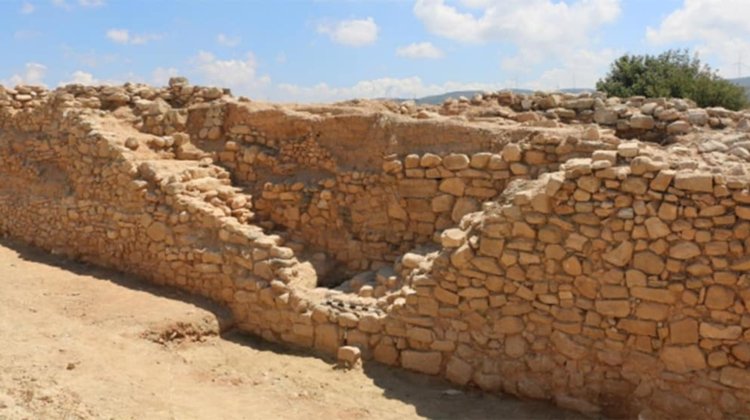Excavations reveal Palaepaphos fortress
07:15 - 03 August 2023

The University of Cyprus’ (UCy) Archaeology Research Unit has been busy excavating a fortress buried under the tumulus of Laona in Palaepaphos (Kouklia village) and dates back to the Cypro-Classical period.
In fact, the site has been the unit’s main focus this year, it said in a press release, with the aim of uncovering and highlighting the fortress at a height of about 3 metres so that its digital mapping can be carried out by the Polytechnic University of Milan.
The Paleopaphos excavation first started in 2006, under the direction of Professor of Prehistory and Protohistoric Archaeology Maria Iakovou and as part of the analysis programme of the urban landscape of the state of Ancient Paphos. Palaepaphos today has, in addition to the famous sanctuary of Aphrodite, the most extensive administrative landscape (citadel) of the Cypro-Classical period with defence, palace and laboratory complexes that were erected by the Paphos dynasties of the 5th and 4th centuries BC.
"After the completion of the geomorphological study and the publication of the findings concerning the construction of the Laona tumulus, which was the focus of research for a decade (2012-2022), the mission of May-June 2023 was exclusively dedicated to the excavation of the monumental fortress settlement of the Cypro-Classical period (5th-4th centuries BC) which was found buried under the tumulus," UCy said.
Over a four-week period of intense excavation activity, the unit – helped along by undergraduate students from UCy, postdoctoral researchers from the University of Siena UNISTRASI and postgraduate students from the University of Crete – removed layers of the tumulus that touch the inner face of the defensive monument.
The field work for the implementation of the mapping took place at the end of June within the framework of the INSIGHT 2022-2024 research programme financed by the A.G. Leventis Foundation.
Based on the digital division of the tumulus into excavation blocks (4x4m), about 500 square metres from the exposed layers of the tumulus, so far without any indication of the existence of a burial chamber. However, the east and north-west sides of the fortress complex were revealed in a length that exceeded 135 m this year, as well as three access stairs to the top of the fortress. The two scales face each other and are located on the eastern side, while the third was found further north, under the top of the tumulus that had been preserved at 114 m above sea level.
It is noted that the southward development of the monumental defence complex of Laona, although interrupted due to the extensive erosion caused by mechanical interventions of levelling agricultural plots, has reduced the distance from the palace building on the plateau of Hadjiabdoulla to 30m.
It is anticipated that during the next excavation period (2024), the wall of Laona will be connected to the wall protecting the eastern side of the palace. On the Hadjiabdoulla plateau, the University of Cyprus mission identified and excavated an extensive laboratory complex adjacent to the western face of the palace.
